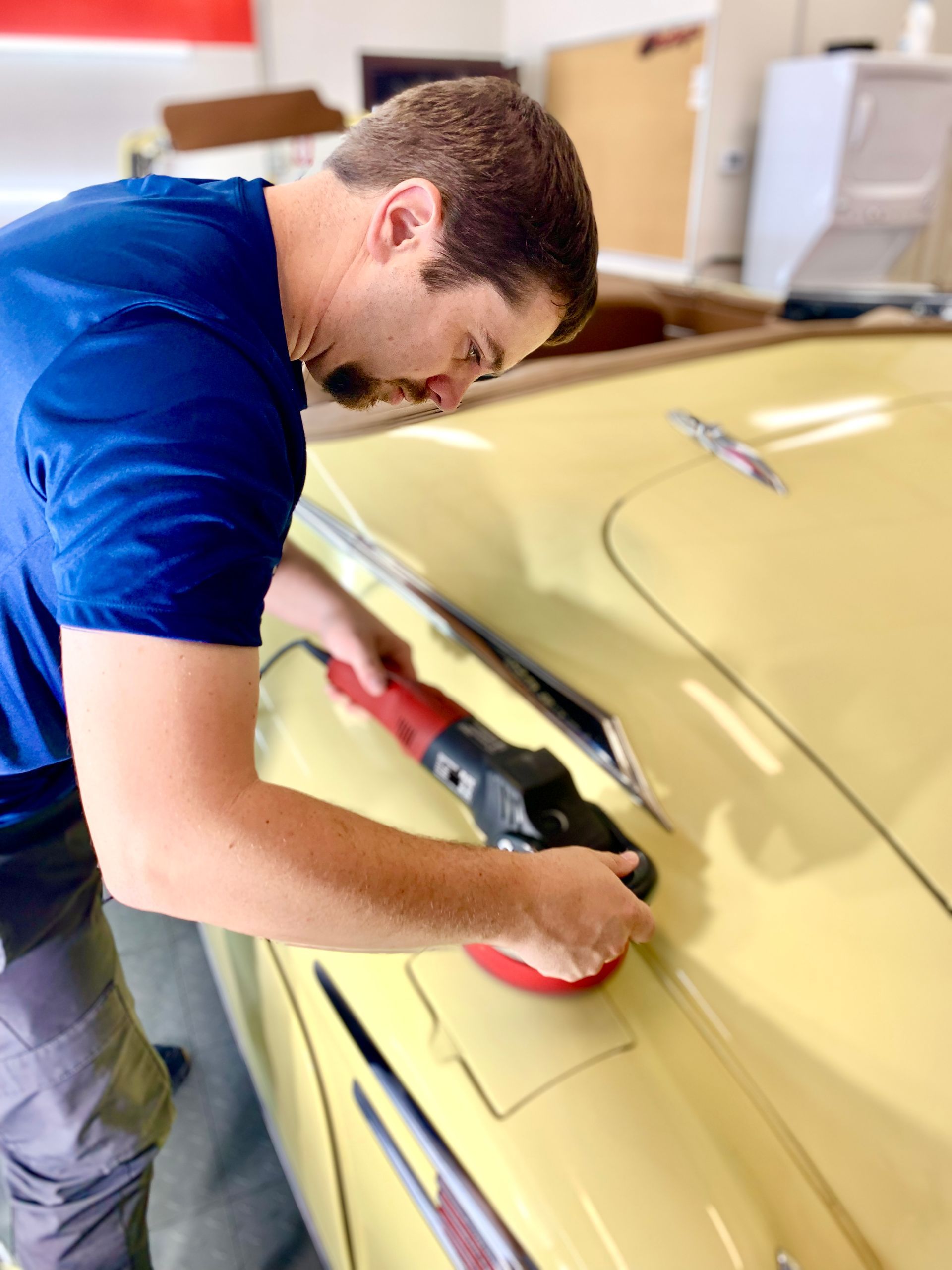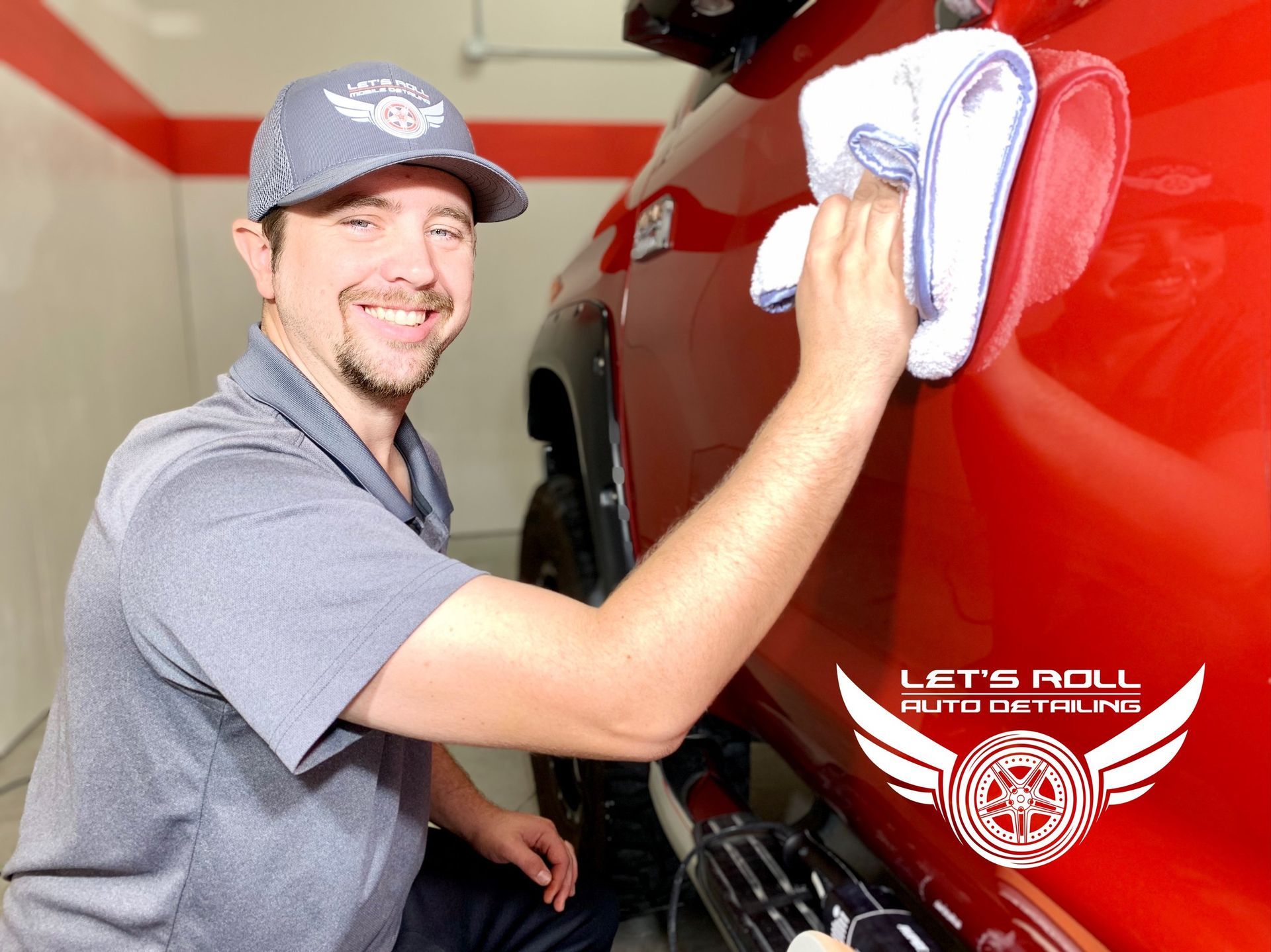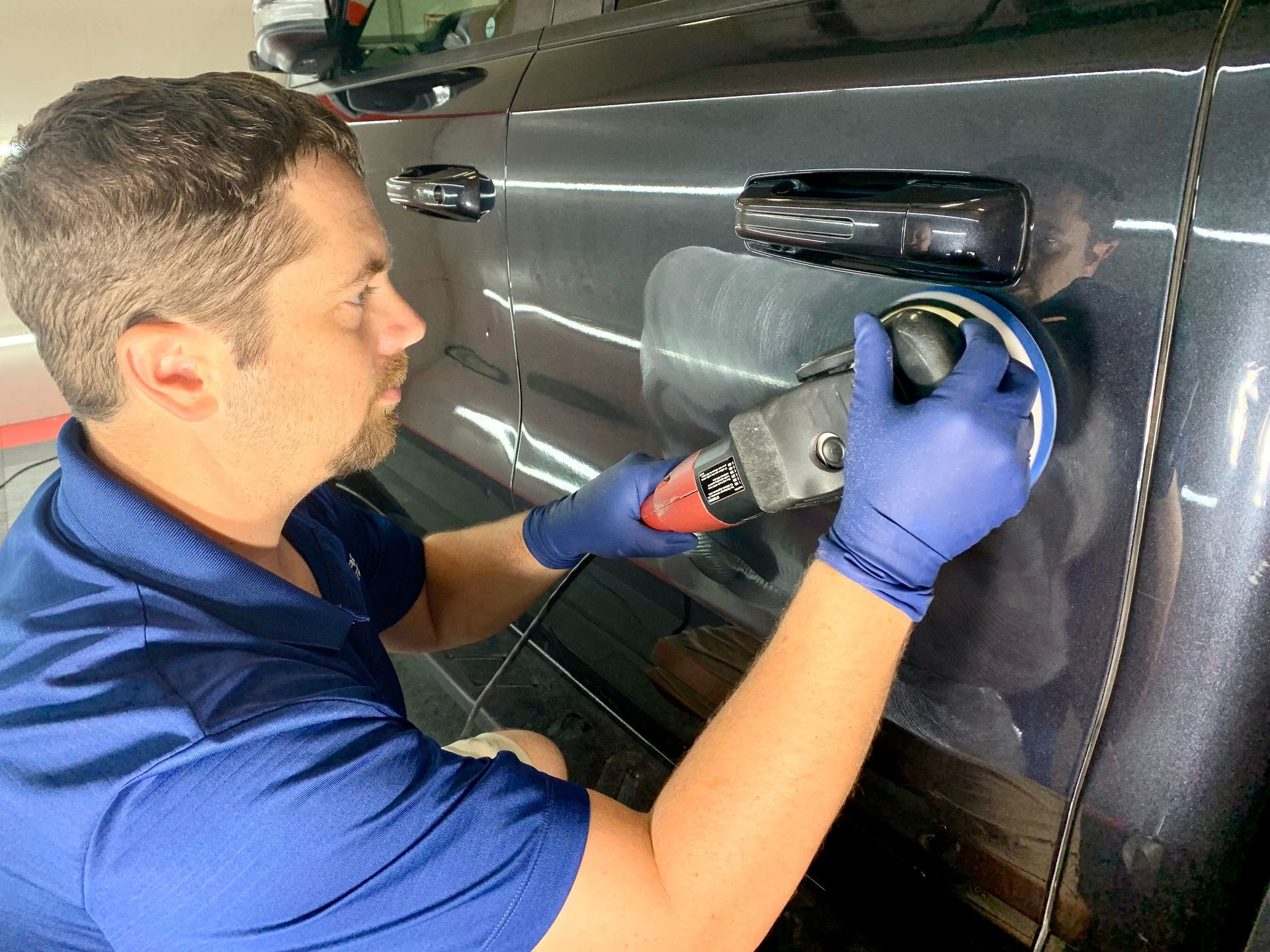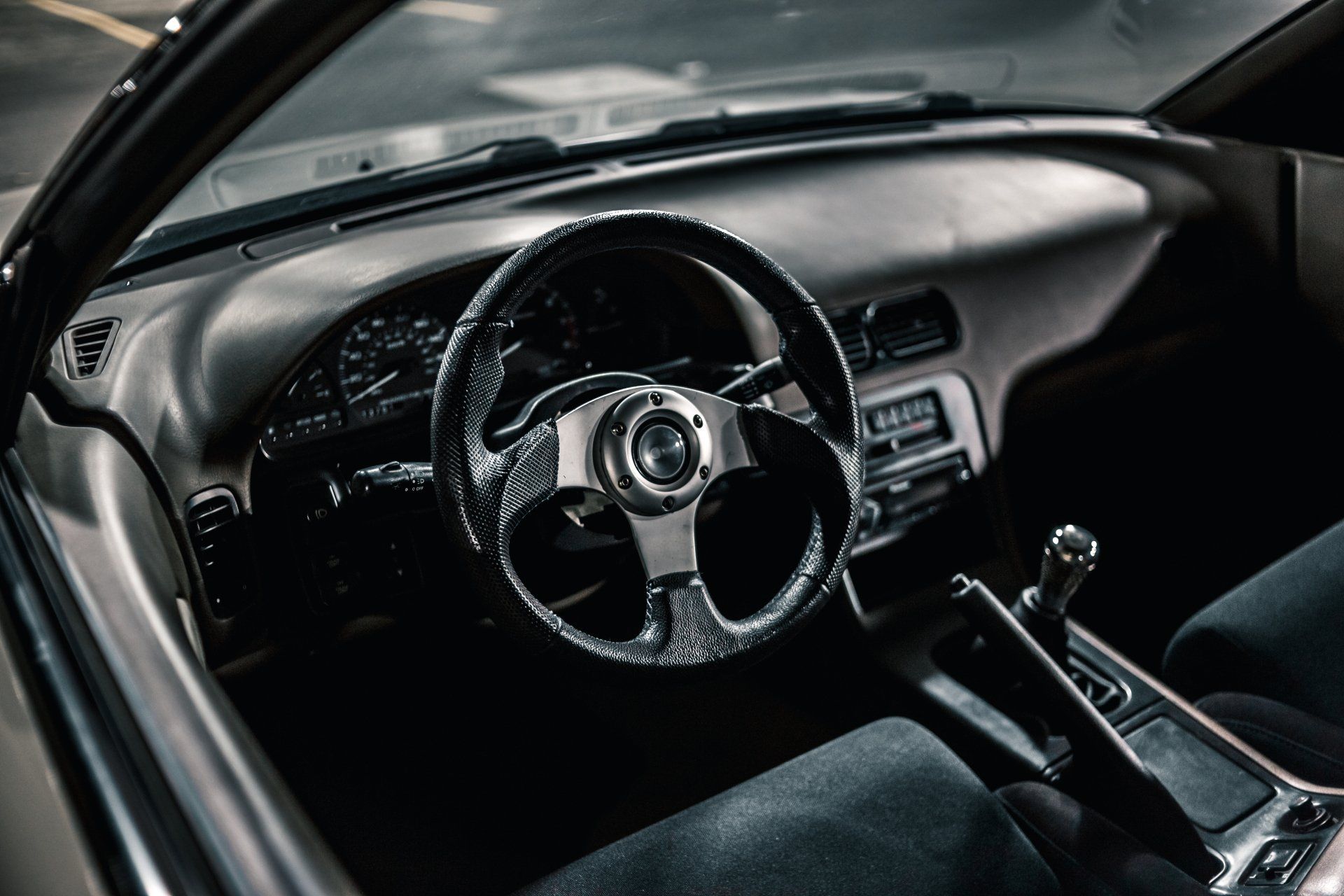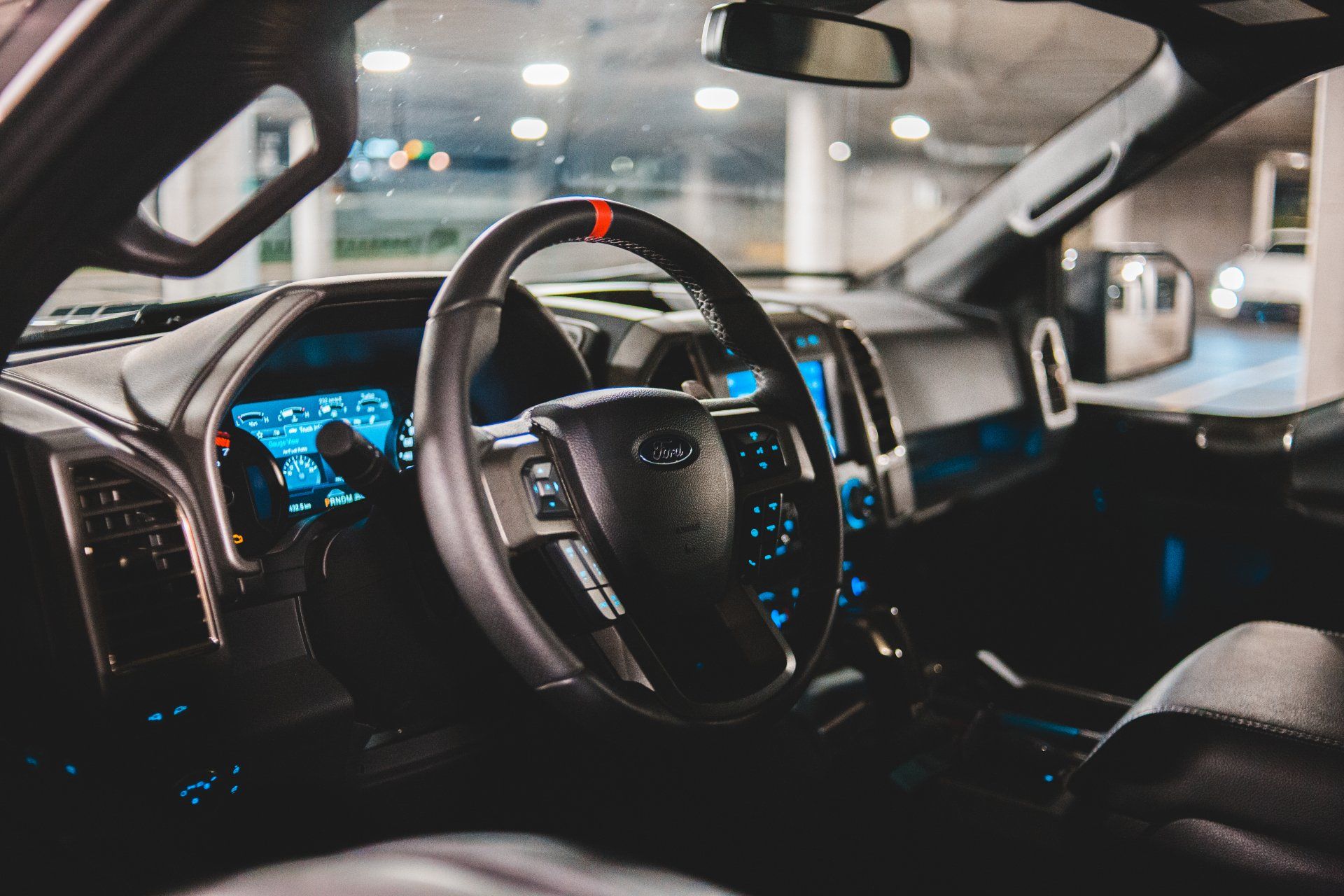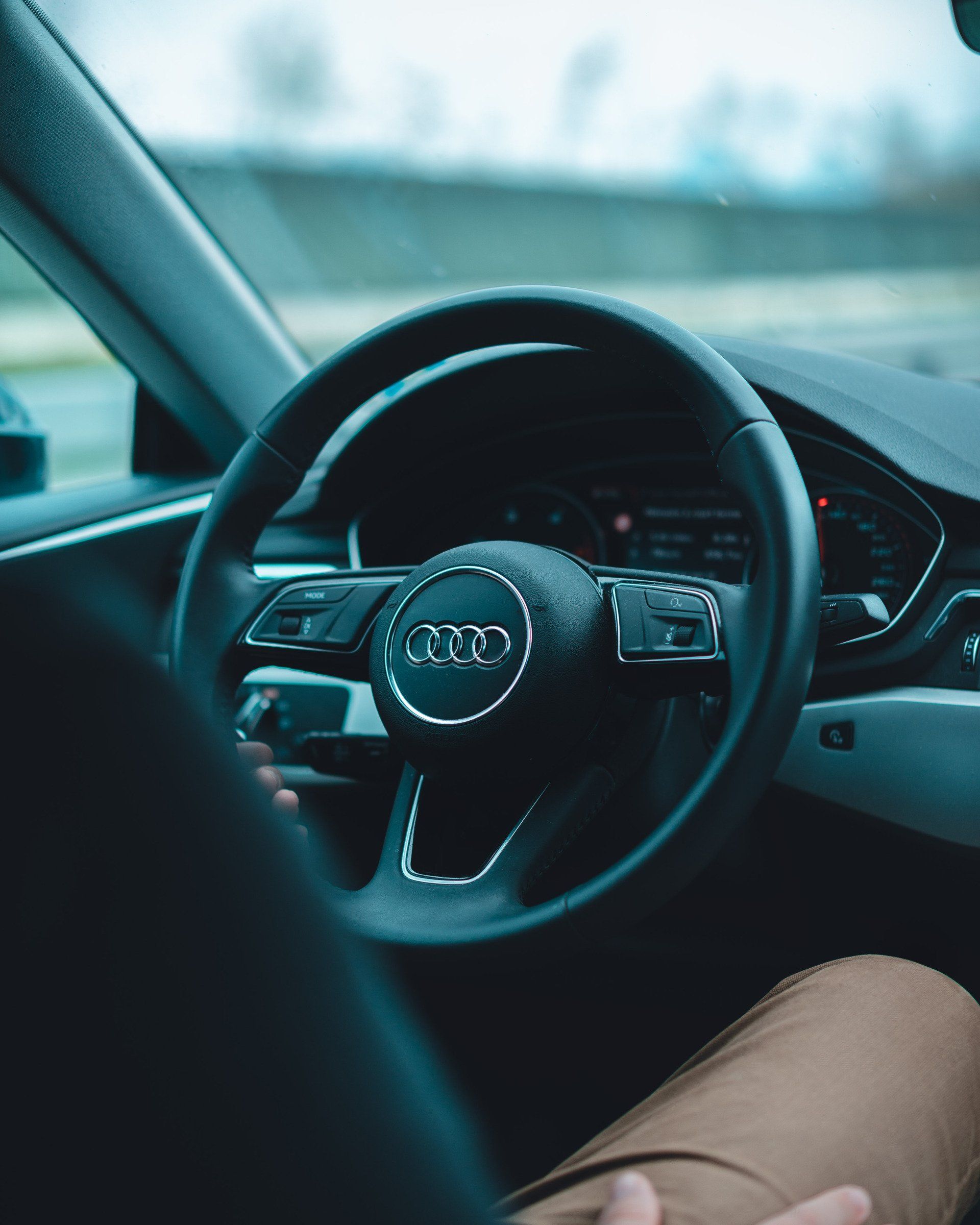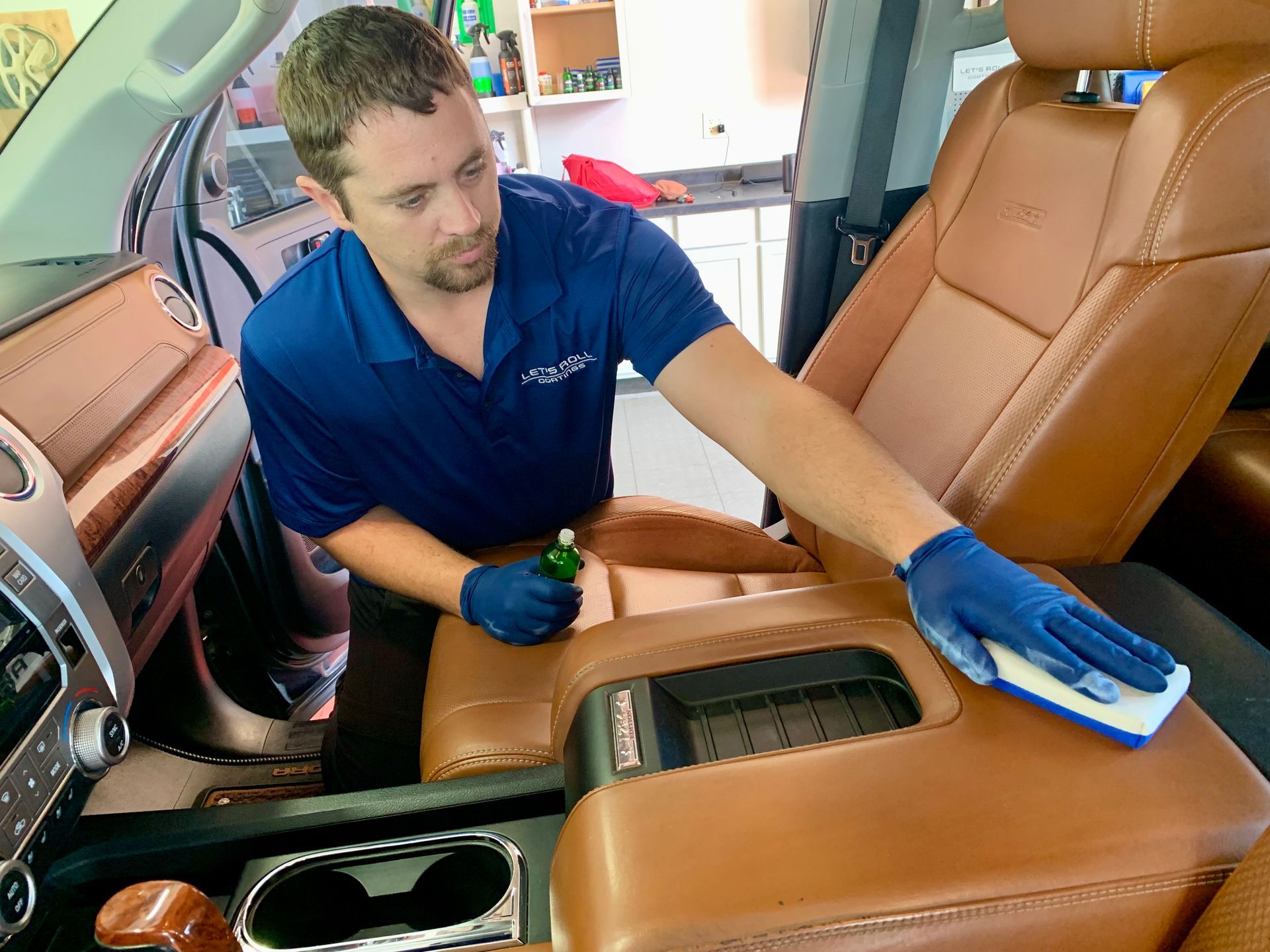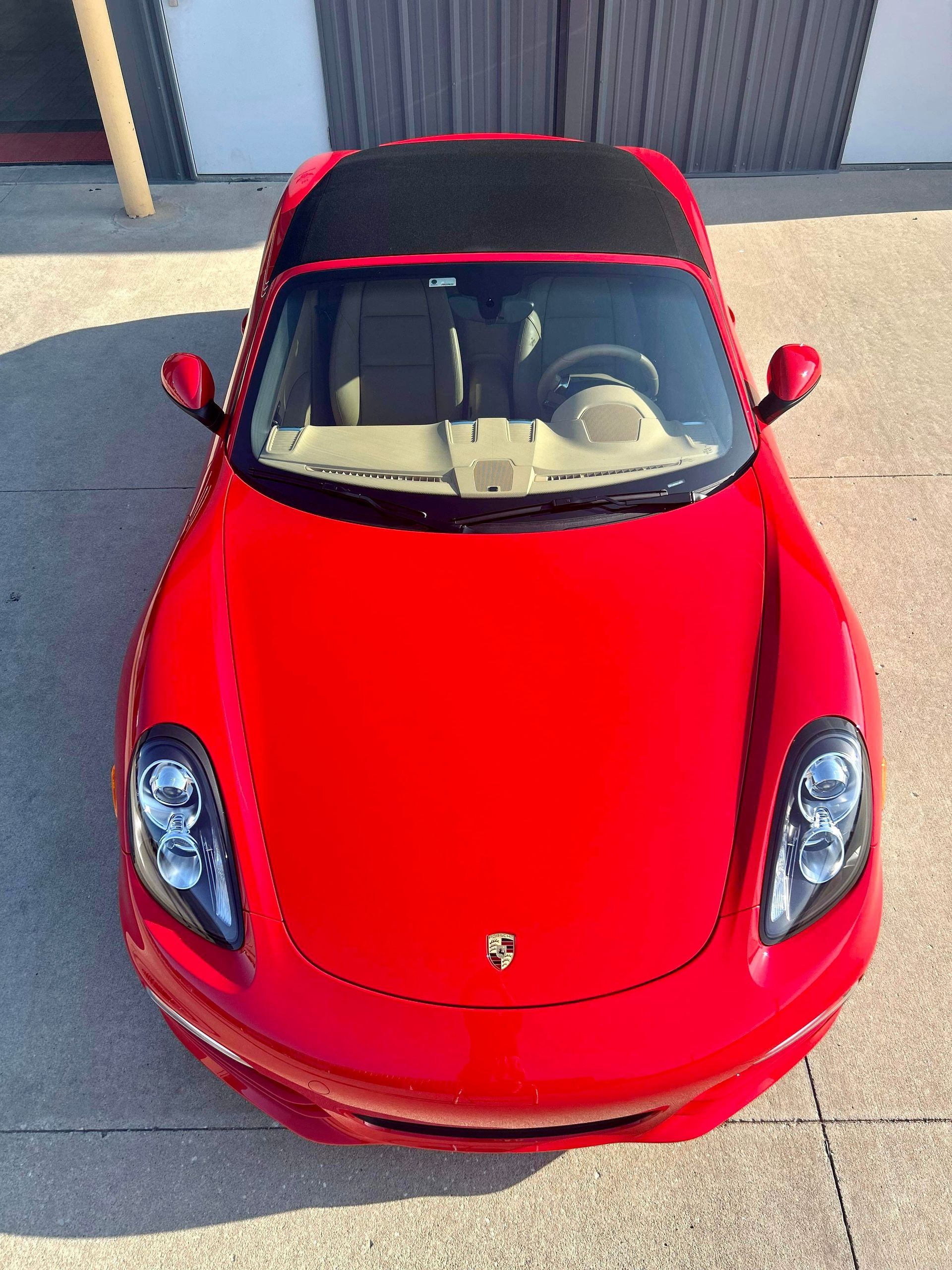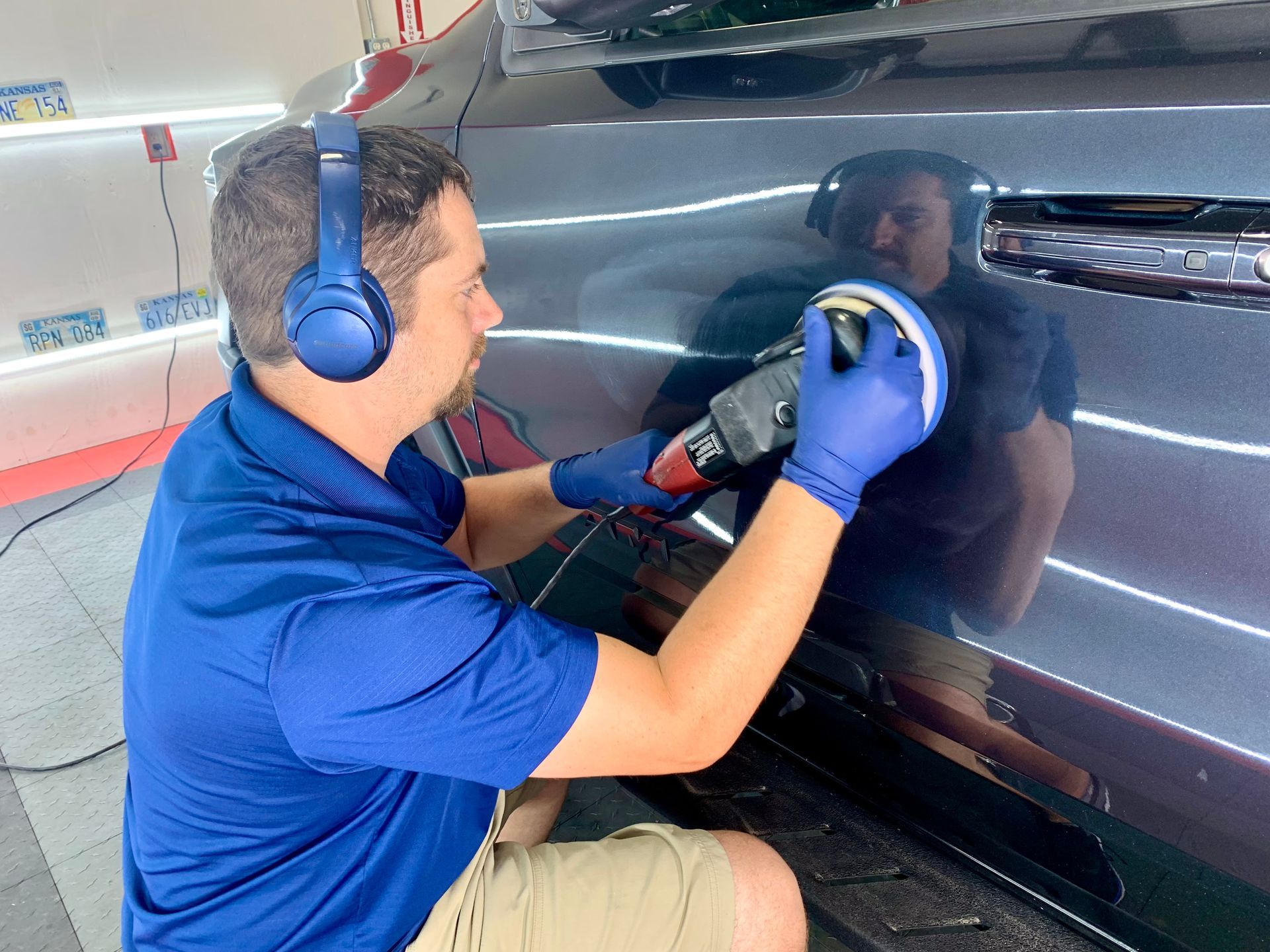What to Look For in Auto Interior Detailing: Essential Tips and Services
When you think about detailing your car's interior, what comes to mind? Maybe it’s the prospect of a fresh, clean space that makes every drive more enjoyable. After all, we spend a lot of time in our cars, and keeping them tidy can really improve our overall driving experience. But with so many options out there—do-it-yourself methods, countless products, and various professional services—it can be tough to know where to start. The key is to figure out what matters most to you. Are you looking for a quick spruce-up or a deep clean? Understanding this can help guide your choices as we dive into essential tips for auto interior detailing that not only keeps your vehicle looking gr eat but also enhance its longevity and comfort. Let’s get started!
When looking for auto interior detailing services, consider the range of services offered, including vacuuming, upholstery and leather cleaning, and surface polishing. Additionally, evaluate the experience and reputation of the detailer, the quality of products used, and whether they offer a satisfaction guarantee to ensure a thorough and professional cleaning experience for your vehicle.
Assessing Professional Auto Interior Detailing Services
When selecting a detailing service for your vehicle, it’s essential to consider various factors that can significantly impact the quality of care your car receives. From the expertise and certifications of the professionals to the tools and cleaning products they use, each element plays a crucial role in ensuring a thorough and effective detailing experience. By evaluating these aspects, you can make an informed decision that enhances both the appearance and longevity of your vehicle.
- Expertise & Certifications: Understanding expertise and certifications is crucial in selecting a detailing service. Detailers often hold certifications from reputable organizations like the International Detailing Association (IDA). This ensures they have undergone rigorous training and follow industry best practices consistently. Checking these credentials on their website or asking directly can provide peace of mind regarding professionalism.
- Tools & Technology: Beyond qualifications, the tools and technology used by professionals play a pivotal role in service quality. Detailers equipped with advanced tools—like steam cleaners, commercial-grade vacuums, and specialized cleaning solutions—can deliver impressive results that DIY methods might not achieve. For instance, a steam cleaner can penetrate fabric fibers and lift dirt without harsh chemicals, preserving your car's interior.
- Customer Reviews: Another vital factor to consider is customer reviews and testimonials. Platforms like Google, Yelp, or dedicated automotive forums provide insights into real customer experiences. Reading feedback might reveal patterns in service quality or detail work. If multiple reviews highlight a shop's attention to detail and customer satisfaction, it's an indication of making a wise choice.
Once you've evaluated services based on expertise, tools, and reviews, it's important to explore the cleaning products they utilize to achieve stellar outcomes. The right products can enhance results, ensuring that your vehicle not only looks great but also maintains its value over time.
Evaluating Products for Interior Detailing
When embarking on the journey of auto interior detailing, one of the most crucial considerations is choosing the appropriate cleaning solutions tailored to various materials within your vehicle. For example, leather seats demand specialized cleaners that penetrate deeply without compromising integrity. A reputable product stands out for its deep-cleaning prowess paired with nourishment—ensuring your leather stays supple while warding off drying and cracking over time.
- Microfiber Cloths and Brushes: Microfiber cloths are indispensable when it comes to car detailing. Their soft texture ensures they won't scratch even the most delicate surfaces—think polished dashboards and shiny consoles. This gentle touch combined with their incredible absorbency means they can efficiently lift dust and spills without leaving behind pesky lint. Both compact and versatile, a set of microfiber cloths allows you to tackle all areas of your vehicle with ease. For intricate spots like air vents or cup holders, small detailing brushes come in handy. These brushes are adept at dislodging dust and grime from hard-to-reach places without damaging any surfaces.
- Eco-friendly Options: More than just personal preferences, being mindful of the environment dramatically influences our choices in cleaning products. Thankfully, various eco-friendly options exist that deliver impressive results while being gentle on Mother Earth. Reputable products not only clean effectively but also refrain from harmful chemicals that can affect indoor air quality or aquatic life. By choosing eco-conscious products, you help ensure that your car's interior is not just spotless but also free from toxic substances that could harm both your health and the planet. Having the right products is essential, but using the correct techniques ensures optimal effectiveness.
- Techniques Matter: It’s critically important to couple high-quality products with effective techniques to get the best outcomes from your detailing efforts. Understanding how to properly apply each product enhances performance; for instance, when using leather conditioner, it's best applied with a clean microfiber cloth in circular motions to allow thorough absorption. Similarly, knowing how much pressure to apply when shampooing fabric seats can mean the difference between an immaculate finish and potential damage or staining.
Always remember: it isn't merely about having the best product; it’s about utilizing it wisely for ideal, long-lasting results. Through proper maintenance techniques alongside thoughtful product choices, you’ll ensure your car interior remains a haven of cleanliness and comfort.
Essential Cleaning Techniques
Using effective cleaning techniques can dramatically enhance the experience of being in your car. By adopting a thorough approach, you can create an interior that feels fresh and inviting, making every journey more enjoyable. Effective cleaning techniques can transform your car's interior into a fresh, clean, and welcoming space. It’s more than just a quick wipe or vacuum; it’s about creating an inviting environment every time you enter your vehicle.
- Thorough Vacuuming: Start with a comprehensive vacuuming session using specialized attachments to reach every nook. Don’t overlook tricky spots like under seats and around adjusters, and ensure you slide the seats forward and backward to catch all dust and debris.
- Spot Cleaning & Stain Removal: After vacuuming, tackle stains immediately to prevent them from becoming permanent. For fabric, a water-vinegar mix can be effective, while leather requires specialized cleaners that nourish and remove stains without damage.
- Elevating with Steam Cleaning: Next, use a steam cleaner to sanitize surfaces and lift stubborn grime without harsh chemicals. The heat from the steam penetrates deep into materials, killing bacteria and neutralizing odors for a refreshing finish.
- Establishing a Routine: Finally, integrate these cleaning methods into a regular routine for sustained cleanliness. This practice not only improves your vehicle's atmosphere but also extends the life of its interior components, preserving comfort and value over time.
Tips for Long-term Maintenance
Maintaining a clean and organized car interior is crucial for both aesthetic appeal and long-term value. By adopting a regular cleaning routine, you can enjoy the fresh feeling of a well-kept vehicle and enhance your overall driving experience. Here’s a structured approach to help you keep your car spotless:
- Weekly Vacuuming: Aim to vacuum your car at least once a week. This helps eliminate dirt particles before they can embed themselves into upholstery or carpets. Regular vacuuming not only keeps your car looking clean but also contributes to a healthier environment inside your vehicle.
- Biweekly Surface Wiping: Wipe down interior surfaces every two weeks to maintain cleanliness. This practice also improves air quality, which is especially important for hybrid commutes or family trips. Regular surface cleaning helps create a more pleasant atmosphere for everyone inside the car.
- Use Protective Covers: Invest in high-quality seat covers and floor mats to protect against spills and wear. These items act as barriers, catching debris and preventing stains from reaching your car’s fabric. This simple measure can save you from costly cleaning or repairs down the line.
- Condition Leather Interiors: For leather interiors, proper conditioning every few months is vital. Regular conditioning keeps leather supple, preventing cracking and fading from sun exposure or temperature changes. This small step can significantly extend the life of your car's interior materials.
- Conduct Regular Maintenance Checks: Inspect door seals, floor mats, and under seats to uncover hidden dirt or crumbs. Addressing these areas can prevent unpleasant odors or mold from developing over time. Regular checks ensure your car remains a clean and comfortable space.
- Utilize Steam Cleaning: Using steam cleaners every three to four months enhances deep cleaning efforts. This method effectively removes allergens and revitalizes fabrics, contributing to a healthier driving environment. A deep clean helps maintain the overall condition of your car’s interior.
- Make it a Habit:
Once these cleaning practices become habitual, they require minimal thought or effort. Dedicating a little time each week leads to a visually appealing space that enhances your overall sense of well-being. Your vehicle can then serve as a welcoming backdrop for countless memories.
Cost vs Quality of Service
When you're looking into auto interior detailing, the price tag can be quite tempting. You may have seen basic packages advertising for $50 and wondered what you might be giving up. On average, basic interior detailing costs between $150 and $350, while high-end services can easily exceed $500. This range reflects not only the varying levels of service but also the scale of your vehicle. It's not just about how much you're willing to spend; it’s about ensuring that the service you choose meets your specific needs.
Understanding what constitutes a high-quality service can help justify those higher prices. In addition to standard cleaning tasks like vacuuming and shampooing upholstery, high-quality services frequently incorporate extras that elevate the experience. These could include UV protection for surfaces, antibacterial treatments to maintain hygiene, and ozone generators that remove stubborn odors. These value-adding services contribute significantly to keeping your car looking pristine and extending the life of its materials—worth considering when evaluating the total cost.
The decision-making process extends beyond mere dollar signs. Think about your vehicle's condition: heavily soiled interiors will likely require more effort, thus raising costs due to increased labor for stain and odor removal processes. Meanwhile, a smaller vehicle generally attracts lower costs compared to larger ones. If you're contemplating getting your car detailed, it’s essential to phone around and gather quotes from different providers while asking about their specific offerings. Quality does not always equate to quantity; however, investing in more comprehensive detailing packages often yields better long-term results.
Assessing Costs
Remember that cost plays a crucial role in determining the scope and thoroughness of the service you're receiving. Basic packages usually cover surface cleanings without deep treatments. For instance, a basic interior detail may run you between $150 and $200 and typically includes nothing more than a dashboard clean and vacuuming of the seating area. However, if you opt for an advanced interior detail, which ranges from $200 to $350, you would not only enjoy those basic benefits but also receive shampooing and conditioning for leather seats.
Luxury packages further push the envelope, ranging from $500 to $900+, focusing on deep steaming and hot water extraction techniques, which may yield unparalleled results but also inflate your bill quite a bit. So before diving headfirst into a deal based solely on cost, take a moment to evaluate what is most important for your car’s longevity and cleanliness. It's also vital to ensure regular maintenance aligns with your habits and preferences; understanding these facets can guide you toward making informed choices as you explore various options available in the market.
DIY vs Professional Detailing
When faced with the decision between undertaking auto interior detailing yourself or hiring a professional, it can feel like a classic tug-of-war. On one hand, DIY detailing offers you significant cost savings and grants you complete control over every step of the process. Imagine diving into your vehicle after a long week, putting on some music, and transforming your car's interior into a fresh haven. Armed with a vacuum, a few microfiber cloths, and some effective cleaning solutions, you can achieve results that rival those of a professional detailer—if done correctly. It’s essential to note that with the plethora of online resources available today, anyone can find detailed guides tailored to their specific needs. This makes it easier than ever to follow along and learn as you go—ensuring nothing is overlooked in your pursuit of that spotless finish.
However, while DIY detailing sounds appealing, it's crucial to consider potential pitfalls associated with this approach. One of the most significant drawbacks of going the DIY route is time constraints. Cleaning a car thoroughly can be surprisingly time-consuming; don’t be surprised if you find yourself spending upwards of three to six hours on your first attempt! Moreover, there's often an initial investment in quality tools and products to consider. A vacuum with attachments, specialized upholstery cleaners, and decent microfiber towels don't come cheap. While saving on service fees is enticing, maintaining a well-stocked supply of products could add up over time.
Now let’s switch gears and examine the benefits provided by professional detailing services. Enlisting professionals brings the advantage of seasoned expertise and access to high-end equipment that isn't readily available in a typical toolkit. With years of experience under their belts, detailers possess essential knowledge about different materials used in cars and how best to clean them without causing damage. Additionally, they utilize specialized tools like steam cleaners and drill brushes designed for efficient deep cleaning. This means they can tackle stubborn stains and hard-to-reach areas more effectively than most amateurs would be able to.
The convenient aspect of having professionals manage the job also can't be overstated—they can usually complete the work in about half the time of a DIY effort. For busy individuals, this benefit is invaluable when balancing schedules filled with work and family obligations. Yet while expert help is great, it also comes with some downsides. The primary downside lies in cost; professional detailing services typically range from $100 to $600, depending on the level of service provided. It's no small expense compared to what you might spend doing it yourself.
In essence, choosing between DIY and professional detailing ultimately comes down to defining your personal priorities. If you value cost-effectiveness and have ample time to dedicate toward learning new skills—with a little elbow grease—you might lean toward DIY methods. Conversely, if you're looking for expertise and efficiency and have the budget for it, a professional detail might just be worth every penny spent for that pristine finish you envision for your vehicle interior.
Unmatched Interior Detailing for Your Vehicle in Wichita, KS
Experience the difference with Let's Roll Coatings’
expert interior detailing services in Wichita, KS. Whether it’s your seats, carpets, or dashboard, our meticulous attention to detail ensures that every surface is treated with the utmost care and precision. We use premium products to clean, protect, and refresh your vehicle’s interior, leaving it looking like new. Let us help you maintain the comfort and cleanliness of your ride for the long haul—contact us today and bring your vehicle’s interior back to life! Call us at (316) 295-0787 to get started!
